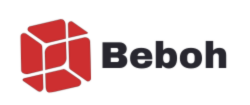Promotional merchandise has become an integral part of marketing strategies for businesses of all sizes. These items, often branded with a company’s logo or message, serve as tangible reminders of a brand, helping to foster recognition and loyalty among consumers. In a competitive marketplace, utilizing promotional merchandise effectively can set a business apart and enhance its visibility.
One of the primary advantages of promotional merchandise is its ability to create a lasting impression. Unlike digital ads that can be easily overlooked, physical items such as pens, tote bags, or mugs provide a continuous reminder of a brand. When people use or see these items in their daily lives, they are more likely to remember the brand associated with them. This repeated exposure can lead to increased customer loyalty and repeat business.
Moreover, promotional merchandise can be tailored to suit various marketing campaigns and target audiences. For instance, a company launching a new product might distribute branded items that relate directly to that product, creating a cohesive marketing message. Alternatively, businesses can choose items that appeal to specific demographics, ensuring that their promotional efforts resonate with the intended audience. This level of customization allows brands to connect with consumers on a more personal level, enhancing the effectiveness of their marketing strategies.
In addition to enhancing brand visibility, promotional merchandise can also serve as a cost-effective marketing tool. Compared to traditional advertising methods, such as television or print ads, the cost per impression for promotional items is often significantly lower. This makes them an attractive option for businesses operating on tight budgets. Furthermore, many promotional items are durable and have a long lifespan, meaning that the initial investment can yield returns over an extended period.
Another key benefit of promotional merchandise is its versatility. These items can be used in a variety of contexts, from trade shows and corporate events to employee appreciation gifts and customer giveaways. For example, at a trade show, having branded items on hand can help draw attendees to a booth, providing an opportunity for face-to-face interaction and relationship building. Similarly, giving away promotional items as part of a customer loyalty program can incentivize repeat purchases and foster goodwill among customers.
To maximize the impact of promotional merchandise, businesses should consider a few best practices. First, it’s essential to select high-quality items that reflect the brand’s values and message. Poor-quality products can create a negative impression and may even deter potential customers. Additionally, businesses should ensure that the branding is clear and visible on the merchandise, as this will enhance recognition.
Furthermore, businesses should think strategically about when and how to distribute their promotional items. Timing can be crucial; for example, launching a new product alongside a promotional giveaway can create buzz and excitement. Additionally, incorporating promotional merchandise into social media campaigns can extend the reach of the brand, encouraging customers to share their experiences with the items online.
In conclusion, promotional merchandise is a powerful tool for enhancing brand visibility and fostering customer loyalty. By providing tangible reminders of a brand, these items can create lasting impressions and drive consumer engagement. When executed thoughtfully, promotional merchandise can be a cost-effective, versatile, and impactful component of any marketing strategy. For businesses looking to explore the potential of promotional merchandise, consider checking out the available services at promotional merchandise providers. By leveraging these items effectively, brands can ensure they remain top-of-mind for consumers and cultivate long-lasting relationships.









